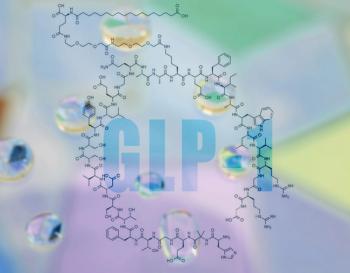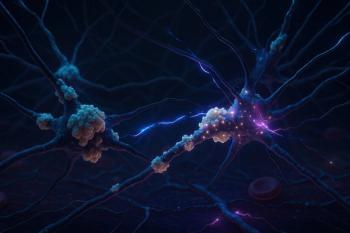
Addressing Treatment-Resistant Depression: Opportunities and Challenges
Key Takeaways
- TRD prevalence estimates vary widely due to inconsistent definitions, affecting research and treatment protocols. This inconsistency also impacts insurance coverage and clinical decision-making.
- APPs, including NPs and PAs, are vital in diagnosing and managing psychiatric disorders, enhancing access to care and supporting patient-centered treatment approaches.
Explore the complexities of treatment-resistant depression and the vital role of advanced practice providers in enhancing patient care and outcomes.
CLINICAL REFLECTIONS
According to a recent US study, 30.9% of those treated for major depressive disorder (MDD) show treatment resistant depression (TRD) in 12 months.1 However, international estimates of TRD prevalence range from 6% to 55% of patients receiving antidepressant treatment.2 This wide range of estimates has been attributed to ambiguities in TRD definitions across translational research and treatment development—ambiguities that persist through clinical and policy decision-making.2 The lack of consensus on a definition has been suggested to negatively impact comparative treatment research and understanding of biological mechanisms, resulting in inconsistent medical insurance coverage.3
Advanced practice providers (APPs) such as physician assistants (PAs) and nurse practitioners (NPs) play a critical role in the diagnosis and treatment of psychiatric disorders, improving access to health care services.4 PAs and NPs serve as key members of a health care team, taking on responsibilities and duties across the clinical spectrum to expand access to patients who seek treatment for depression.
Considerations for a TRD Diagnosis
Despite recognition that TRD must be addressed, there is no precise definition. The US Centers for Medicare & Medicaid Services (CMS) convened a public meeting of the Medicare Evidence Development and Coverage Advisory Committee (MEDCAC) in 2016 to obtain independent recommendations and expert advice regarding the definition of TRD.5 Although the MEDCAC panel supported the establishment of an evidence-based, operational definition of TRD, they did not officially define the condition.3 Similarly, the US Food and Drug Administration (FDA) and the European Medicines Administration (EMA) convened, where they defined TRD as the failure to respond to 2 or more antidepressant agents despite adequate dosage, duration, and treatment adherence.2,6,7
In addition to honing the definition of TRD, clinicians should rule out pseudo-resistance, which is a possibility when a patient does not respond to treatment but the criteria for TRD have not been met.8 Misdiagnosis of MDD, a lack of adequate medication trials, and individual differences in the metabolism of antidepressants contribute to pseudo-resistance.2
Inaccurate assessment of treatment response due to the lack of measurable, quantifiable, and agreed-upon endpoints can also inhibit an accurate diagnosis.2 This is especially significant in the primary care setting, where initial treatment of MDD often occurs.2 Measurement-based care and the systematic use of standardized measurements to inform treatment decisions is often not implemented in these settings, meaning clinicians are not leveraging the widely accepted, validated, self-report questionnaires (eg, 9-item Patient Health Questionnaire and the 21-item Beck Depression Inventory) that support clinical care by measuring symptoms.9
Further complicating the clinical picture, measuring the core feature of anhedonia (ie, loss of desire, effort, and the inability to experience pleasure or enjoyment from activities that were previously pleasurable) is complex and varies between scales.10,11 Meanwhile, almost 70% of patients with depression experience anhedonia, and the effectiveness of traditional antidepressants in addressing it is limited.11
Ultimately, the lack of a consensus definition of TRD and subsequent discrepancies in practice behavior contribute to suboptimal treatment interventions and compromised health outcomes for patients.2 Wider adoption of standardized measurements and the assessment of treatment responses would aid health care professionals (HCPs) in the diagnosis and treatment of TRD.
Evolving Roles for TRD Treatment
Although the precise roles for APPs vary depending on the practice and the individual patient visit, they are increasingly taking on the diagnosis and management of psychiatric disorders, with physicians sometimes seeing the patient or just providing advice.12
In October 2024, 27 states and the District of Columbia approved NP full practice authority, which is defined by the American Association of Nurse Practitioners as “the collection of state practice and licensure laws that allow for nurse practitioners to evaluate patients, diagnose, order and interpret diagnostic tests, initiate and manage treatments—including prescribe medications—under the exclusive licensure authority of the state board of nursing” (Figure 1).13,14 This allows NPs to practice to the fullest extent of their education and training. Some states may require experience or additional training before allowing full practice authority.
Although PAs have supervisory or collaborative agreements in most states, several have removed supervision requirements, granting PAs wider autonomy.15 In fact, a recent survey found that 3 out of 4 PAs practice independently, with state-mandated supervision or collaboration often functioning as a clerical formality.16
Despite these statistics, there is reason to believe PAs and NPs are not being fully utilized. For instance, data from an ambulatory care study found that PAs and NPs were involved in only 6.7% of depression visits and were the sole provider in 2.9% of the cases.4 A more recent analysis found stronger results: the proportion of health care visits delivered by either a PA or an NP increased from 14% in 2013 to 25.6% in 2019.12 The data is more positive in psychiatry, where visits delivered by PAs and NPs for mood disorders, anxiety disorders, and schizophrenia diagnoses were 33.8%, 36.7%, and 37.9%, respectively.12
Data similarly shows underutilization in inpatient care. A recent study of 9 inpatient psychiatric facilities across 3 states found that several had not even considered PAs for inpatient care.
Shared Decision-Making and the Need for Compassionate Care
Treatment options for TRD should be discussed openly with patients to facilitate shared decision-making (SDM).17 This collaborative process encourages both the patient and provider to exchange information, align on preferred treatment options, and mutually agree on a care plan. Discussions should cover symptom management, potential adverse effects, and strategies for managing adverse effects. 18
The Agency for Healthcare Research and Quality (AHRQ) developed the SHARE approach (Figure 2), which outlines 5 key steps to guide SDM.19,20 These steps are summarized as:
- Seek the patient’s participation
- Help the patient to understand treatment options
- Assess the patient’s values and preferences
- Reach a decision
- Evaluate the patient’s decision
Studies suggest that SDM increases patient engagement and improves treatment adherence, all of which are essential for TRD.21
Although worthwhile, this approach is time-intensive and busy practices and clinics may have limited time to devote to appropriate SDM. By expanding the health care team with PAs and NPs, we make more room for thoughtful and patient-centered treatment decisions, ultimately improving adherence and outcomes.
In addition, NPs and PAs can take some of the load of patient education, answering questions about their treatment, risks, adverse effects, costs, and duration in a supportive environment.22
Moving Beyond Stigma to Effective Treatment
The term treatment-resistant depression can be stigmatizing and may discourage patients from feeling optimistic about their prognosis. Instead, it should be framed that the medication is not eliciting an adequate response, and there is an opportunity to explore different approaches.
The goal of treatment should be complete remission, not just symptom reduction, as full remission is linked to better long-term outcomes.23,24 Five specific patient-centered measures have been associated with remission from depressive symptoms at 6 months, namely inquiring about patient preferences for care, discussing any questions or concerns, providing treatment plans, utilizing depression scales, and asking about suicide risk.17
PAs and NPs can also play a key role in implementing novel, faster-acting treatments for TRD. Therapeutic options beyond monoamine modulation have demonstrated rapid symptom relief and improved treatment response rates, and prioritizing aggressive initial treatment and maintaining an appropriate dosage is key in managing TRD.23-25 Novel interventions that target central neurotransmitters, such as opioid receptor modulators, cholinergic compounds, γ-aminobutyric acid modulators, and non-competitive N-methyl D-aspartate receptor agonists have been shown to exhibit antidepressant effects within hours of intravenous infusion or intranasal administration, respectively.
APPs should be prepared to educate patients about these interventions and help shift the treatment mindset toward a more urgent approach when appropriate. Education is required to change the mindset around the urgency of treatment, as this may have a large impact on the patient’s everyday life.
Concluding Thoughts
In the treatment landscape for depression, there is a need for a clear and consistent application of the definition of TRD to address inconsistencies and issues with treatment protocol and approval. With their expanding and ever-evolving roles, PAs and NPs are ideally positioned to engage patients with TRD and have a meaningful impact on their quality of life.
Although managing the treatment for such patients can be challenging, it is firmly within the scope of the APP to manage difficult cases, and PAs and NPs should be encouraged to further specialize and develop autonomy within their health care team.
Acknowledgments
Medical writing and editorial assistance were provided by Melissa Vetten, PhD, of Medistrava, an Inizio Company, in accordance with Good Publication Practice (GPP 2022) guidelines, funded by Janssen Scientific Affairs, LLC, and under the direction of the authors.
Disclosures
This research was supported by Janssen Scientific Affairs, LLC, a Johnson & Johnson company.
Mr Asbach is on the speaker bureau for AbbVie, Otsuka, Neurocrine, Teva, Axsome, ITCI, and Janssen. He is a consultant for Neurocrine, Teva, ITCI, Karuna, Biogen, and Janssen.
Ms Harris is a consultant for Janssen.
Ms Crown is on the speaker bureau for Axsome Therapeutics, Intracellular Therapies, Janssen Pharmaceuticals, Lundbeck, Neurocrine Biosciences, Otsuka America Pharmaceuticals, Inc., Supernus, and Takeda. She is a consultant for Asxome Therapeutics, Intracellular Therapies, Kanssen Pharmaceuticals, Karuna, Lundbeck, Otsuka America Pharmaceuticals Inc, Supernus, Takeda, and is on faculty (advisory board, honoraria) for Axsome Therapeutics, Intracellular Therapies, Janssen Pharmaceuticals, Otsuka America Pharmaceuticals, Inc. She is a primary investigator for Boehringer Ingelheim.
Ms Clemens is on an advisory board for Janssen and speaker bureau for AbbVie and Biogen/Sage Pharmaceuticals.
Ms Chapman has nothing to disclose regarding the topic.
References
1. Zhdanava M, Pilon D, Ghelerter I, et al. The prevalence and national burden of treatment-resistant depression and major depressive disorder in the United States. J Clin Psychiatry. 2021;82(2):29169.
2. McIntyre RS, Alsuwaidan M, Baune BT, et al. Treatment‐resistant depression: definition, prevalence, detection, management, and investigational interventions. World Psychiatry. 2023;22(3):394-412.
3. Conway CR, George MS, Sackeim HA. Toward an evidence-based, operational definition of treatment-resistant depression: when enough is enough. JAMA Psychiatry. 2017;74(1):9-10.
4. Keller AO, Hooker RS, Jacobs EA. Visits for depression to physician assistants and nurse practitioners in the USA. J Behav Health Serv Res. 2018;45:310-319.
5. MEDCAC meeting: treatment resistant depression. US Centers for Medicare and Medicaid Services. April 27, 2016. Accessed November 18, 2025.
6. Guideline on clinical investigation of medicinal products in the treatment of depression. European Medicines Agency. May 30, 2013. Accessed February 11, 2025.
7. Major Depressive Disorder: Developing Drugs for Treatment Guidance for Industry. Draft Guidance. US Department of Health and Human Services, Food and Drug Administration. June 2018. Accessed February 11, 2025. https://www.fda.gov/regulatory-information/search-fda-guidance-documents/major-depressive-disorder-developing-drugs-treatment
8. Howes OD, Thase ME, Pillinger T. Treatment resistance in psychiatry: state of the art and new directions. Mol Psychiatry. 2022;27(1):58-72.
9. Martin-Cook K, Palmer L, Thornton L, et al. Setting measurement-based care in motion: practical lessons in the implementation and integration of measurement-based care in psychiatry clinical practice. Neuropsychiatr Dis Treat. 2021;17:1621-1631.
10. Rizvi SJ, Pizzagalli DA, Sproule BA, et al. Assessing anhedonia in depression: potentials and pitfalls. Neurosci Biobehav Rev. 2016;65:21-35.
11. Serretti A. Anhedonia and depressive disorders. Clin Psychopharmacol Neurosci. 2023;21(3):401-409.
12. Patel SY, Auerbach D, Huskamp HA, et al. Provision of evaluation and management visits by nurse practitioners and physician assistants in the USA from 2013 to 2019: cross-sectional time series study. BMJ. 2023;382:e073933.
13. State Practice Environment. American Association of Nurse Practitioners. 2024. Accessed March 20, 2025.
14.. ANA's Principles for Advanced Practice Registered Nurse (APRN) Full Practice Authority. American Nurses Association. 2020. Accessed November 18, 2025.
15. In what states can physician assistants practice independently? Barton Associates. December 19, 2024. Accessed November 18, 2025.
16. Nelson J. Medscape physician assistant career satisfaction report 2023: changes but contentment. June 30, 2023. Accessed November 18, 2025.
17. Rossom RC, Solberg LI, Vazquez-Benitez G, et al. The effects of patient-centered depression care on patient satisfaction and depression remission. Fam Pract. 2016;33(6):649-655.
18. Tariman J. Welcome to the era of shared decision-making. ASH Clinical News. July 2016. Accessed November 18, 2025. https://ashpublications.org/ashclinicalnews/news/2559/Welcome-to-the-Era-of-Shared-Decision-Making
19. The SHARE Approach Steps of Shared Decision Making: Expanded Reference Guide With Sample Conversation Starters. Agency for Healthcare Research and Quality. Accessed February 11, 2025. Accessed November 18, 2025.
20.. The SHARE Approach: Conversation Starters. Agency for Healthcare Research and Quality. October 2024. Accessed February 11, 2025.
21. Hopwood M. The shared decision-making process in the pharmacological management of depression. Patient. 2020;13(1):23-30.
22. Al-Harbi KS. Treatment-resistant depression: therapeutic trends, challenges, and future directions. Patient Prefer Adherence. 2012;6:369-388.
23. Pandarakalam JP. Challenges of treatment-resistant depression. Psychiatria Danubina. 2018;30(3):273-284.
24. Gaynes BN, Rush AJ, Trivedi MH, et al. The STAR* D study: treating depression in the real world. Cleve Clin J Med. 2008;75(1):57-66.
25. McIntyre RS, Rosenblat JD, Nemeroff CB, et al. Synthesizing the evidence for ketamine and esketamine in treatment-resistant depression: an international expert opinion on the available evidence and implementation. Am J Psychiatry. 2021;178(5):383-399.
Newsletter
Receive trusted psychiatric news, expert analysis, and clinical insights — subscribe today to support your practice and your patients.











